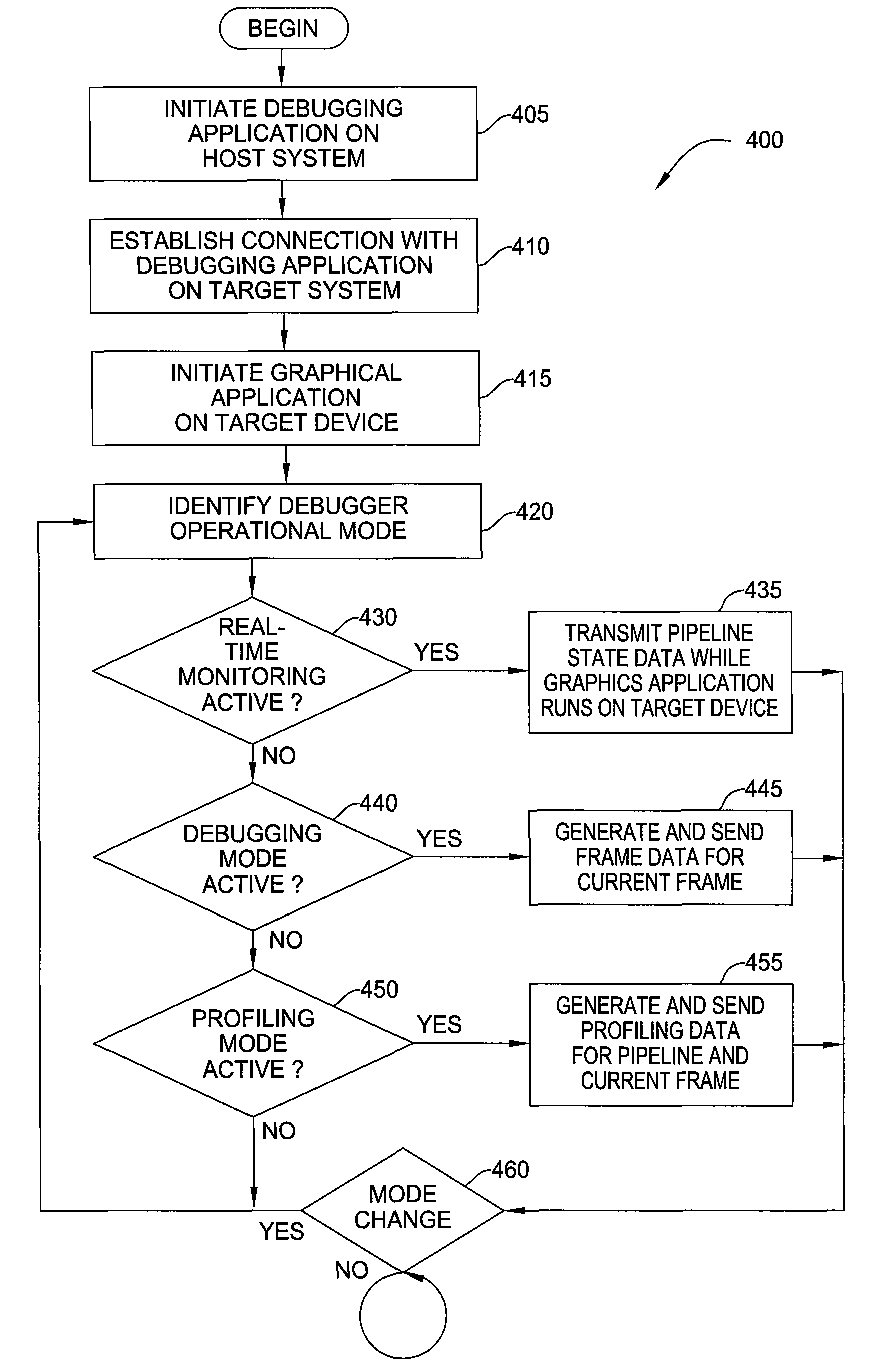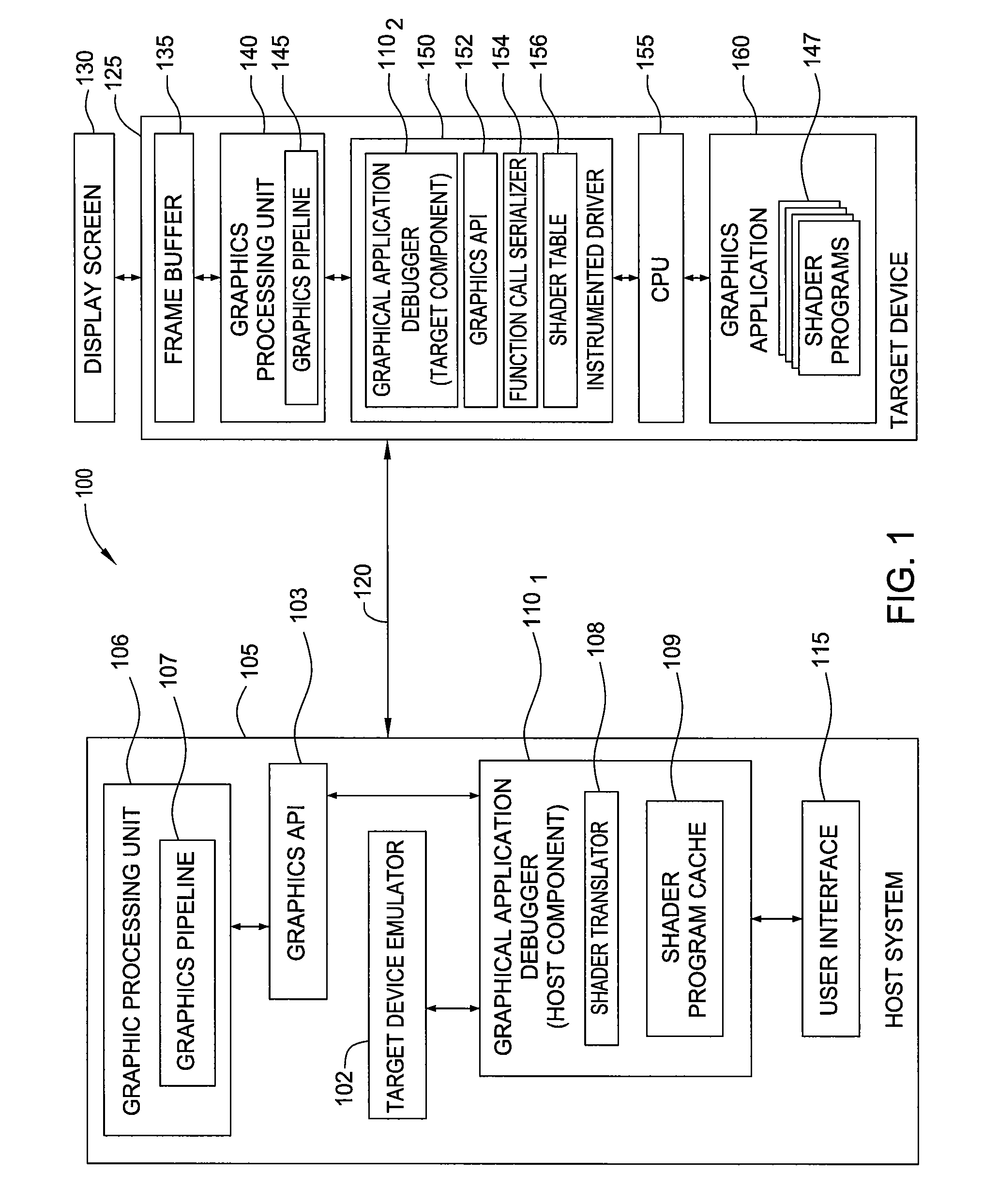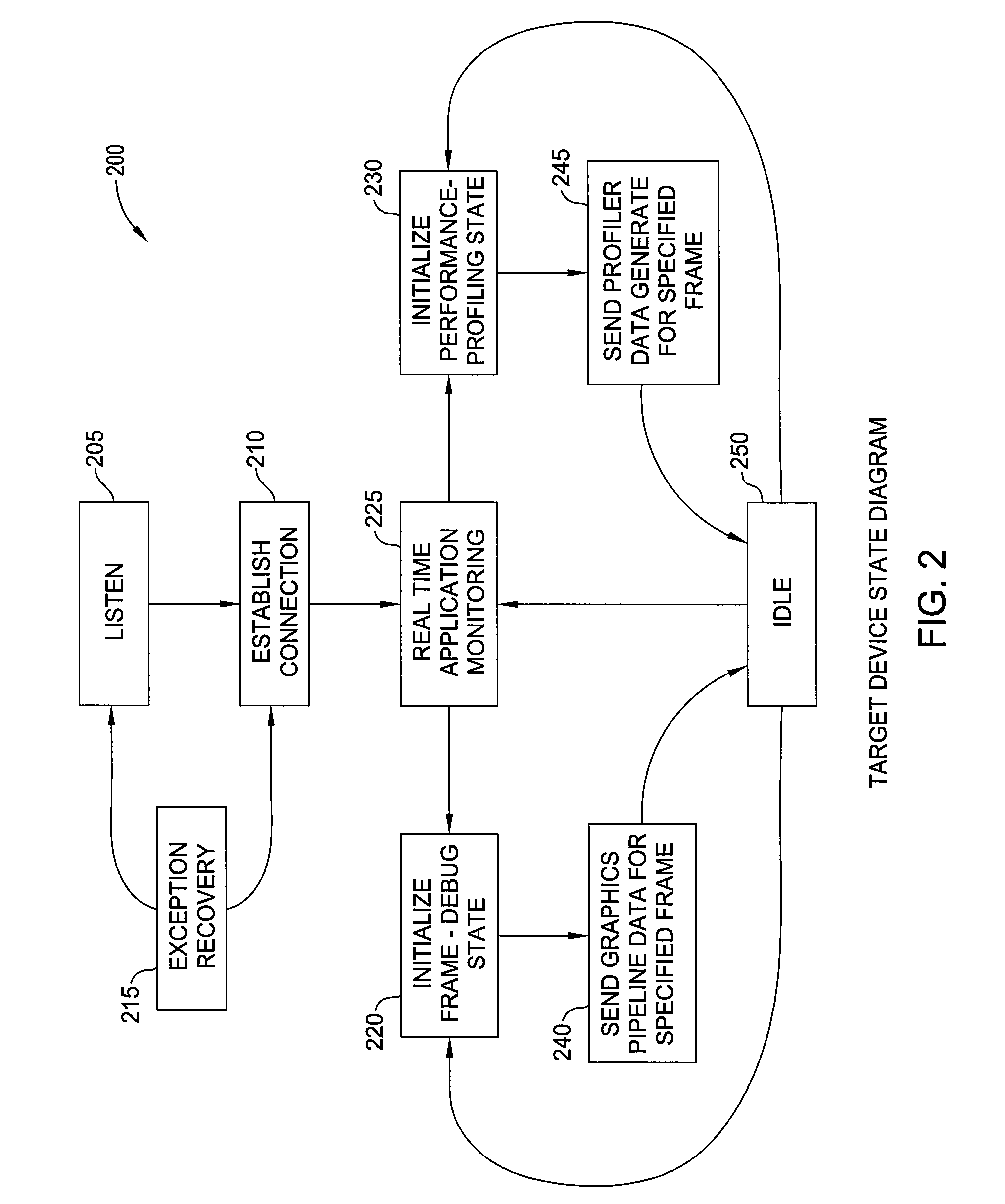Translation of a shader assembly language binary for debugging a graphics application running on a remote device
a graphics application and assembly language technology, applied in error detection/correction, instruments, digital computers, etc., can solve problems such as low rendering frame rate, non-visual anomalies, poor performance of graphics applications,
- Summary
- Abstract
- Description
- Claims
- Application Information
AI Technical Summary
Benefits of technology
Problems solved by technology
Method used
Image
Examples
Embodiment Construction
[0023]Embodiments of the invention provide a debugging tool configured to translate a pre-compiled binary shader running on a remote device as part of debugging a graphics application. The remote device may be a hand-held video game console, a mobile phone, or convergence device, and may also be a personal computer system. In one embodiment, a graphical application debugger may include a host component and a target component. The host component executes on a host system and presents a debugging interface to a developer. The interface may provide a collection of data related to the execution state and performance of the graphical application and a graphics pipeline on the target device.
[0024]The target component executes on the remote device and may record data related to the performance of the graphics pipeline and transmit this data back to the host system over a communication link. For example, the target device may include an instrumented version of a graphics device driver confi...
PUM
 Login to View More
Login to View More Abstract
Description
Claims
Application Information
 Login to View More
Login to View More - R&D
- Intellectual Property
- Life Sciences
- Materials
- Tech Scout
- Unparalleled Data Quality
- Higher Quality Content
- 60% Fewer Hallucinations
Browse by: Latest US Patents, China's latest patents, Technical Efficacy Thesaurus, Application Domain, Technology Topic, Popular Technical Reports.
© 2025 PatSnap. All rights reserved.Legal|Privacy policy|Modern Slavery Act Transparency Statement|Sitemap|About US| Contact US: help@patsnap.com



